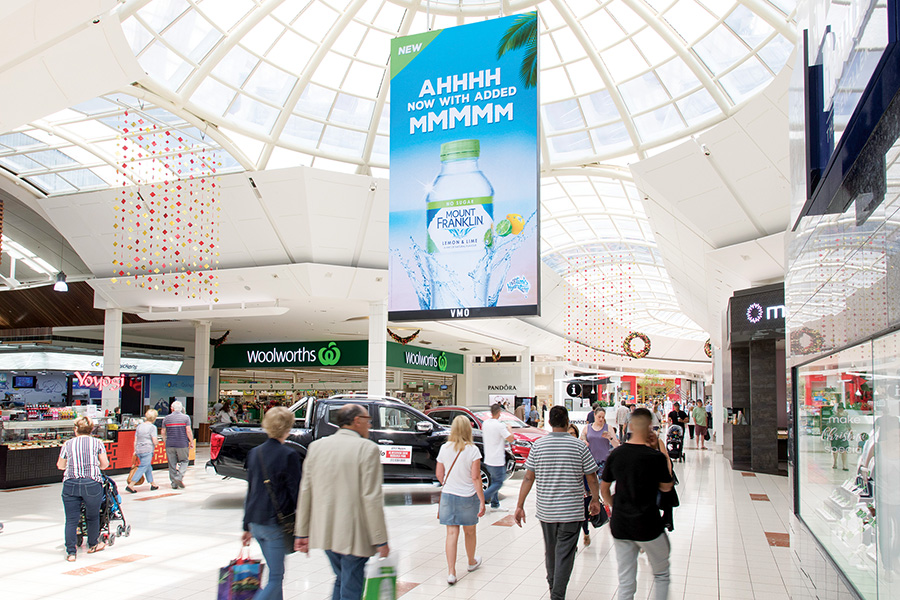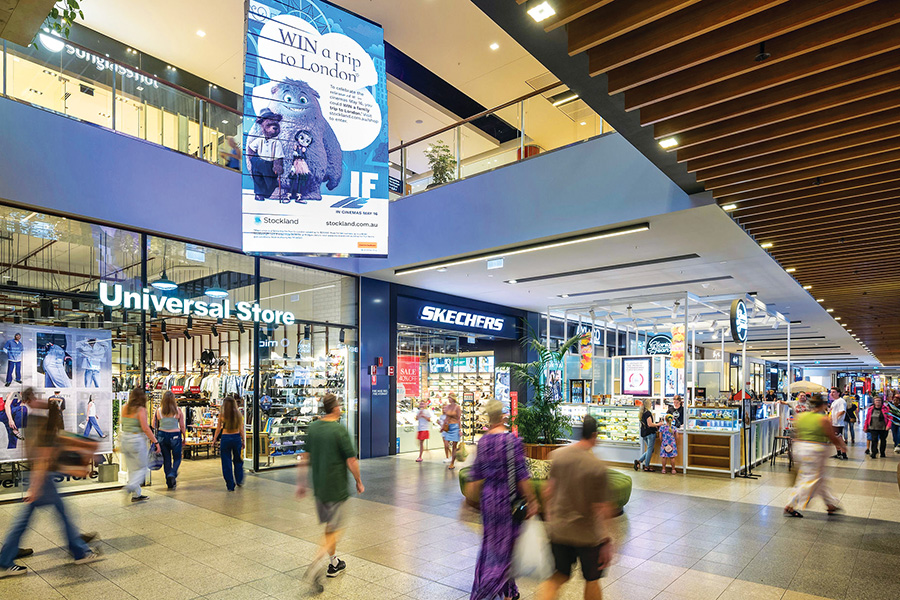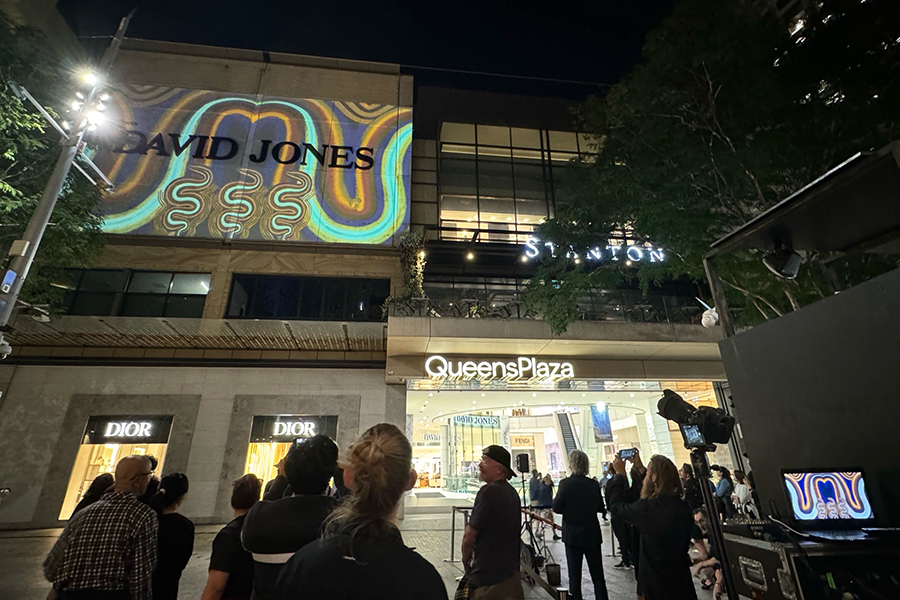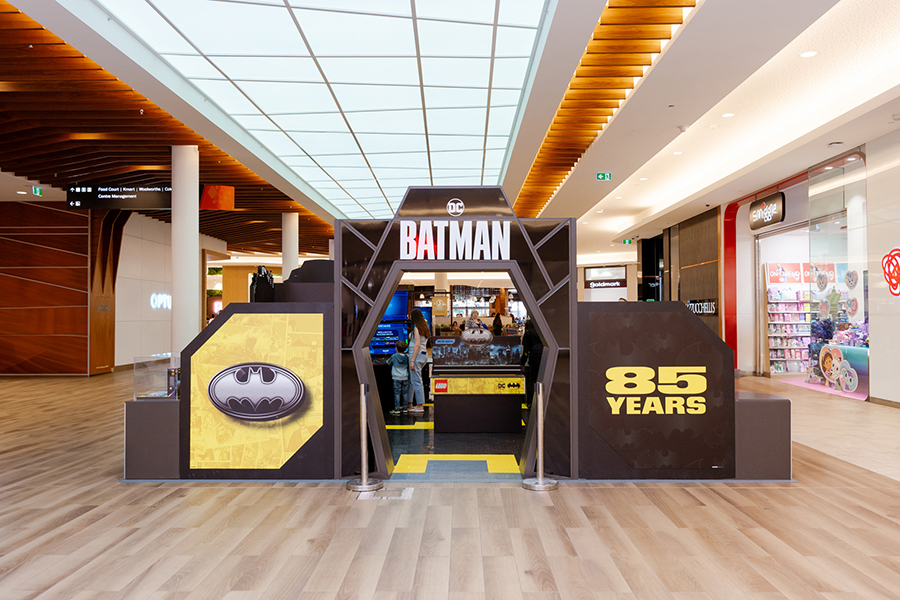Advertising screens are now standard in major shopping centres. One of the experts maintains that ‘strategic placement of screens’ is fundamental to consumer engagement.
In the past year, the outdoor advertising industry has experienced more change and consolidation than ever before. Four of the major competitors consolidated into two – and with the swing back to brand advertising from performance marketing it was a challenging year, particularly for retail advertising.
With a retail media network of more than 1,400 screens across Australia, VMO invested in researching everyday Australians’ interactions with outdoor advertising with a keen focus on retail.
The 2018 research study Moments that Matter was a commissioned research study. Conducting both qualitative and quantitative studies, with a representative sample of 1,500 Australians, we wanted to find the relationship between what Aussies are thinking, doing and why they are there. The hypothesis was that our network could influence audiences at the right moment like no other outdoor formats because of the relationship between what they are thinking, doing and why they are there.
We found that a consumer’s mission had direct impact on their mindset. A number of interesting insights came out of the study, reflecting the changing behaviour of consumers in Australia.
Of all outdoor advertising formats – retail advertising was number one for ad recall with over 65% of those surveyed saying they had seen it in the past month.
Other findings included:
• 73% of consumers said they find digital advertising screens engaging
• Screens positioned in main walkways, food courts, escalators and outside a supermarket were the most recalled. By comparison, carpark and restrooms were the least recalled.
• 50% of shoppers visit a shopping centre two or more times per week
• Eight in ten people visit shopping centres at least once per week
• The more often they shop, the more likely they are to shop at a centre close to home.
• One in three actively engage with advertising every time they see a screen.
As stated earlier, the Moments that Matter study also found that the most recalled locations for advertising screens were the main walkways, food courts and above escalators or directly outside supermarkets. It’s not surprising that this is where our strategy calls for its screens to be placed.
The placement of the screens is strategic, in order to capture the right audience, in the right mindset in the right moment. The Moments that Matter research proved that consumers are in shopping centres with three main mindsets:
1. Achieve – “Often I’m going in there with a very clear task in mind, it’s all about getting things done”
2. Explore – “Finding out what’s now, what’s on trend, staying connected to what is going on out there”
3. Escape – “It’s a break from the kids, do the shopping, have a coffee and daydream before getting back to reality.
Because of these unique mindsets and being on different missions while in shopping centres, shoppers are open to a variety of advertising messages. While there was a strong desire to see advertising that would help them achieve their goals there and then; for example, groceries, pharmacy and QSR, there were also many other categories consumers would like to see. Brands that promote travel, luxury items, cars and fashion came through strongly.
This desire from consumers to view both big brand advertising and products advertised to purchase immediately is evident from the research. In response, VMO has aligned how it sells its advertising network. Advertisers will be able to buy screens, strategically placed for both performance marketing and brand awareness campaigns.
Another strong theme that came through was the importance of keeping connected to their local community. We are currently trialling content partners to keep shoppers informed and up-to-date with entertainment news and health and lifestyle tips.
Changing how advertising is consumed is key to our strategy. In a world with a great deal of visual stimulation, it is essential to cut through the clutter in a way that is engaging to consumers.
A variety in categories and types of advertising from brand funded content to ads at the last point of influence are key to consumers’ experiences in-centre.




















